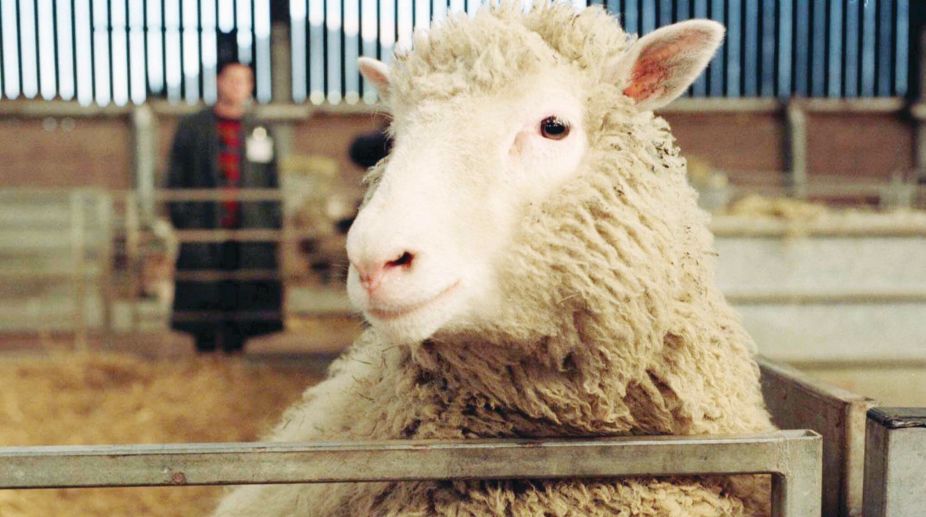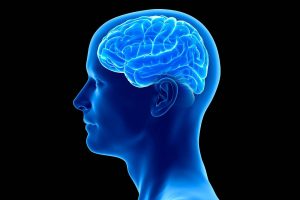Fifteen years have passed since Dolly the sheep was euthanised after developing a lung disease and severe arthritis. She had lived a life in the spotlight and was revealed to the world in 1996 as the first mammal ever to be cloned from another individual’s body cell.
In Dolly’s case, that was a single mammary gland cell from an adult sheep. According to Dr Ian Wilmut, the scientist who led the cloning research team, the sheep earned her name because they “couldn’t think of a more impressive pair of glands than Dolly Parton’s”.
Advertisement
Dolly’s death, like her life, was controversial. Normally sheep live for around 10 years but Dolly had only managed six. This raised questions about the long-term health of clones, and added fuel to the fire of those who considered cloning to be unethical. Upon the initial announcement of Dolly’s birth, the press went into overdrive describing the “furious debate” in the scientific community the discovery had ignited. Many suggested it meant human cloning was inevitable.
At the time, a Princeton University biologist, Dr Lee Silver, told The New York Times it was “unbelievable”. “It basically means that there are no limits. It means all of science fiction is true. They said it could never be done and now here it is, done before the year 2000,” he said.
Yet in many ways, since Dolly’s birth and subsequent death, cloning has become normalised. In recent years, champion horses have been replicated in a bid to — in the words of US cloning company ViaGen — “allow breeders to better leverage their most exceptional animals”. Beloved cats and dogs have been cloned by owners who cannot bear to let go of their favourite pets, while “cloning factories” in China are being used to produce the best livestock in large quantities.
Despite all this, when the cloned monkeys Zhong Zhong and Hua Hua were revealed to the world in January, the furore around cloning was rekindled. While some focused on the treatment of the captive animals themselves, the main concern for many was once again the potential for a “slippery slope” — would cloned monkeys mean cloned humans are right around the corner?
“People are worried about applications in humans, but I think that’s always nonsense,” Professor Robin Lovell-Badge, a cloning expert at the Francis Crick Institute, told The Independent, “Given how inefficient and definitely unsafe it is, you would be crazy to even try it.”
The monkeys were produced using the same technique used to produce Dolly all those years ago — somatic cell nuclear transfer. It involves taking the nucleus, which contains the genetic information, from a donor egg cell, and replacing it with one from another individual’s cell. Following an electric shock to jump start cell division, the embryo will develop into a clone of the animal that donated the genetic material.
According to Professor Lovell-Badge, despite the 15 years that have elapsed, this technique still leaves a lot to be desired. “It works well enough for the commercial companies and the experiments that have been done, so not many people are devoting the effort to try and improve the method,” he said.
While recent research suggests the scare stories about Dolly’s ill health resulting from cloning were unfounded, the inefficiencies of the cloning process itself still make it a difficult procedure for many to swallow. The number of failed attempts required to successfully produce the cloned monkeys hammers home the serious ethical issues that still come with this practice.
“There were two born that died shortly afterwards that were abnormal,” said professor Lovell-Badge, explaining his concerns about the recent study. “If they had shown pictures of those instead of the two cuddly ones that looked OK, then the response might have been quite different.”
In fact, far from there being a total free-for-all on cloning, even the researchers currently working in this area are still keen to emphasise the care that must be taken when using this technology. “Just like nuclear power and artificial intelligence, cloning technology is also a double-edged sword,” said Qiang Sun, one of the scientists responsible for the cloned monkeys, as he and his colleagues assured Chinese state media that they had “no plan to clone humans”.
Monkeys are undoubtedly genetically closer to humans than sheep are, but as Zhong Zhong and Hua Hua were introduced to the world, scientists were once again keen to emphasise the development did not mean human clones were next.
The key point that Lovell-Badge emphasises is that cloning would not create exact copies of existing humans as people might imagine. Environmental factors such as upbringing would interact with the developing child and result in someone very different. “There has been no good justification for doing it,” he said, “You’re not going to recreate a lost loved one, and that’s why I have been so critical of the dog cloning — because they are essentially fooling pet owners into thinking they can recreate the lost pet.”
As for the practical applications of cloning, there are a number of suggestions. The research team behind the cloned monkeys said they wanted to use genetically identical primates to study diseases in humans. On the more ambitious end of the spectrum are plans to resurrect extinct species like woolly mammoths and Tasmanian tigers using cloning technology.
However, the main future use of cloning is likely to be producing better livestock, particularly in combination with newer genome editing techniques. “It’s a very important experimental tool — a route to genetically modifying animals, particularly large animals like cows, sheep and pigs,” said Lovell-Badge.
Having manipulated cells to produce the desired genetic outcome and no unwanted changes, scientists can then clone them. “That’s the advantage of the cloning procedure — it allows you more precisely to get exactly what you want.”
The independent











